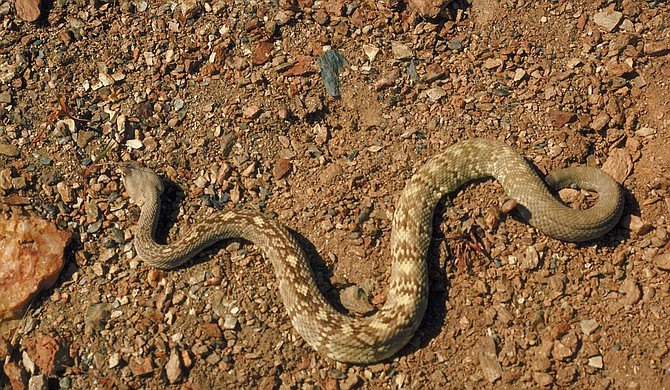While examining a patient a few weeks ago, a clearly upset nurse interrupted me, apologized and informed me that there was a huge snake outside the rear exit of our clinic. Everyone was in panic mode, so I told one of the office workers to contact the animal control person for the area. When the officer arrived, our groundskeeper had scared the snake off into the woods.
In preparation for the snake's possible return, the animal control officer, Craig Cotten, provided important information to the staff and myself on dealing with snakes. After getting approval from his superior officer, Lt. Brian Myers, Cotten also allowed me to meet with him at the Ridgeland Police Department to further discuss animal control and safety when it comes to these misunderstood creatures.
Cotten told me that people are often surprised when they call the number listed for animal control and get the police department. An animal-control officer is part of the local police department, and animal-control officers go through a certification program and have continuous on-the-job training that emphasizes animal behavior and safety. The course work also includes preventative and treatment protocols for zoonotic diseases, such as bacterial infections, that can be transmitted from animals to humans.
"The importance of the continued training is to be able to properly assess the disposition of animals, (which includes) evaluating their behavior to best assess the potential threat to the public that I serve and protect," he said.
Snakes are among the least understood, yet most intriguing groups of animals. As temperatures rise, many of the creatures may come out of hibernation. Mississippi is the home of 40 species, and only six are venomous. The most common venomous snakes in our state include the copperhead, cottonmouth and coral snakes, and rattlesnakes. Even though most of the ones in our area are non-venomous, all should be treated as venomous for safety reasons. Officer Cotten said that citizens should not immediately attack the creatures when they come into contact with them, though. It is best to first assess the situation and be aware that the majority of bites occur when the animals feel threatened.
Snakes are generally not aggressive, and, in most cases, fear humans. However, it's always best to err on the side of caution as there are few species, such as the copperhead, that have been known to be aggressive, Cotten said. So, the next time you see a snake, call your local animal-control officer and keep an eye on its location.
The officer is trained and available to address your situation and determine what is best for you and your slithering guest.
Animal Control Tool Box
Here are a few pieces of equipment that an animal-control officer uses to protect and serve.
Pole grabber—A device used to clamp an animal such as a snake or cat and safely manipulate it into a kennel.
Snare pole—A pole and cable system that can be used to secure an animal such as a dog.
Taurus revolver, also known as "The Judge"—A .410 caliber pistol that can fire two types of bullets, including the bird shot (for small animals) and slugs (for large animals) as the need arises.
Shotgun—A 12-gauge used for extremely large animals such as buffalo and bulls.



Comments
Use the comment form below to begin a discussion about this content.